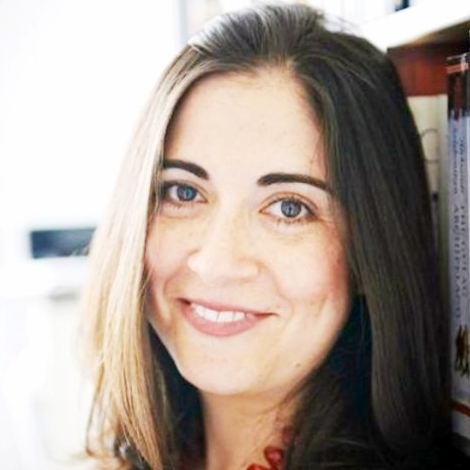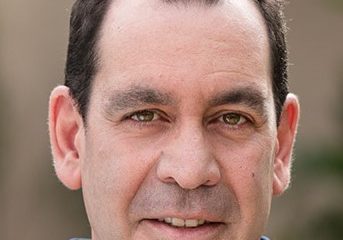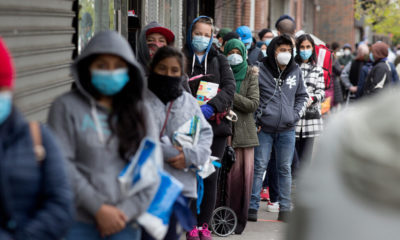
Featured Item

SA Jewry’s pandemic response unique and robust, experts say
The South African Jewish community’s response to the pandemic has been singled out as unique, efficient, and robust in an academic paper that tracks how the community galvanised itself from March to October 2020.
From the start of hard lockdown, “It became apparent to me that our response as a community was unusually speedy, pro-active, and comprehensive,” says Leah Gilbert on what motivated her to write the paper. “I was impressed with the fact that we used the expertise available among us to inform the community. In addition, the quick emergence of support programmes for people who were infected was unique.”
Gilbert is emeritus professor of Health Sociology at the University of the Witwatersrand, where she taught and researched health and disease in the social context for 35 years. Her daughter and fellow author of the article, Shirli Gilbert, is professor of Modern Jewish History at University College London, and academic director of the Sir Martin Gilbert Learning Centre.
The article has already been accessed almost 1 000 times online, a high number for an academic study of this kind. The authors hope it will be useful for understanding communal responses to the pandemic in South Africa and in other communities worldwide.
Of all the Jewish communities in the world, why did they decide to focus on this one? “During the first lockdown in Johannesburg, observing through my professional lens my society’s relationship to health and disease, I had the idea of documenting our community’s response to the pandemic,” says the elder Gilbert.
“It began with the first SA Jewish Report webinar with medical experts, and the subsequent dissemination and sharing of knowledge and activities,” she says. “I approached my daughter, whose research focuses on the South African Jewish community, and we started collecting relevant material.
“The community’s response to the pandemic spanned the gamut from physical and mental health to religious observance, home schooling, financial relief, food aid, and social-welfare support,” Gilbert says. “The common theme among the initiatives was the efficiency with which resources were mobilised, something possible only because of a robust and highly centralised pre-existing communal infrastructure and strong networks of social capital.”
In their paper, they note that, “The unique response of the South African Jewish community to COVID-19 must be understood within the larger context of the relationship between Jews and health. Scholarship suggests that Jews have a heightened concern for health relative to other groups.”
They also write that “unlike other diaspora communities, in South Africa, a great deal of emphasis has historically been placed on communal unity”. Another unique factor is that “following the transition [to democracy], communal investment in outreach has expanded significantly”.
“Taken together, the centrality of health, robust communal infrastructure, and strong community social capital against the background of the Jewish community’s particular positioning in post-apartheid South Africa helps to account for the uniquely co-ordinated, energetic, and multipronged nature of the community’s pandemic response.”
However, the community also faced many challenges during the pandemic. “The ageing nature of the Jewish community in South Africa meant that the percentage of vulnerable people was relatively high,” says the elder Gilbert.
“This higher risk profile helps to explain the motivation for the quick and powerful mobilisation of resources. There was some friction around the question of how support for Jewish communal welfare fitted alongside South African Jews’ commitment to broader South African society. On the whole, however, evidence suggests that community support for both ‘inreach’ and ‘outreach’ initiatives has been generous and widespread.
“The pandemic has also been difficult for this community in particular because of the extent to which Jewish families are dispersed across the world, which meant long periods of time for families to be apart.”
Another challenge has been resources, especially financial. As they write, “despite the robustness of the community’s infrastructure and its still considerable resources, there are concerns about its long-term health and prospects. On 19 June [2020], the Chev [Chevrah Kadisha] was forced for the first time in its 132-year history to call for emergency financial support. Its work in both residential care and financial assistance – sectors especially impacted by the pandemic – left it severely exposed, and with almost no state support and overwhelming reliance on private donor funds, it was placed under unprecedented strain.
“The community remains highly vigilant, and co-ordinated leadership continues to be delivered by the South African Jewish Board of Deputies, the office of the chief rabbi, and the Chevrah Kadisha, together with other organisations and in partnership with Jewish experts,” they write in their conclusion. “Some cracks, however, are already beginning to show. The extent to which it will be possible to retain the strength and co-ordination of these responses as the pandemic’s severe effects persist remains to be seen.”
They researched their subject by collecting data from all issues of South African Jewish publications during the period under study (March to October 2020). This included the SA Jewish Report, the Cape Jewish Chronicle, Jewish Life, and Jewish Affairs, as well as websites, social media, and other public communications of major communal institutions, the office of the chief rabbi, and Jewish-led relief initiatives and organisations. “The analysis of the data took two months, after which we wrote up the article itself,” says the younger Gilbert.
The SA Jewish Report was one of their prime resources, “since it provided granular detail of what was happening on a weekly basis, both events and ongoing discussions and debates. The SA Jewish Report webinars were also key as they were helping to provide support and access to information that the community needed,” she says.
Asked how they think the South African Jewish community will emerge from the pandemic, they say, “The conclusion [of the paper] is a paradoxical one. On the one hand, the article emphasises the robustness of the community’s infrastructure and its considerable resources, which have allowed it to mount an impressive response to the pandemic.
“On the other hand, the enormous challenges posed by the pandemic have also heightened existing feelings of precariousness and vulnerability within the community. The economic future of largely self-funded Jewish communal organisations is uncertain, emigration is ongoing and possibly increasing, and the self-employed (among whom Jews are strongly represented) have been hard-hit,” according to the elder Gilbert.
Asked if they will conduct research on the South African Jewish community in future, the younger Gilbert says, “My historical research on the South African Jewish community is ongoing. I’m working on a study of German Jews who came to South Africa in the 1930s, as well as a special journal issue on South African Jews co-edited with Professor Adam Mendelsohn. In October-November 2021, I’ll be teaching a six-part online course on Jews in South Africa for the Sir Martin Gilbert Learning Centre. Everyone is welcome.”
- The academic paper can be accessed by searching “South African Jewish Responses to COVID-19” on Google.
- The Sir Martin Gilbert Learning Centre course can be accessed by looking at the “What’s On” tab on www.sirmartingilbertlearningcentre.org










